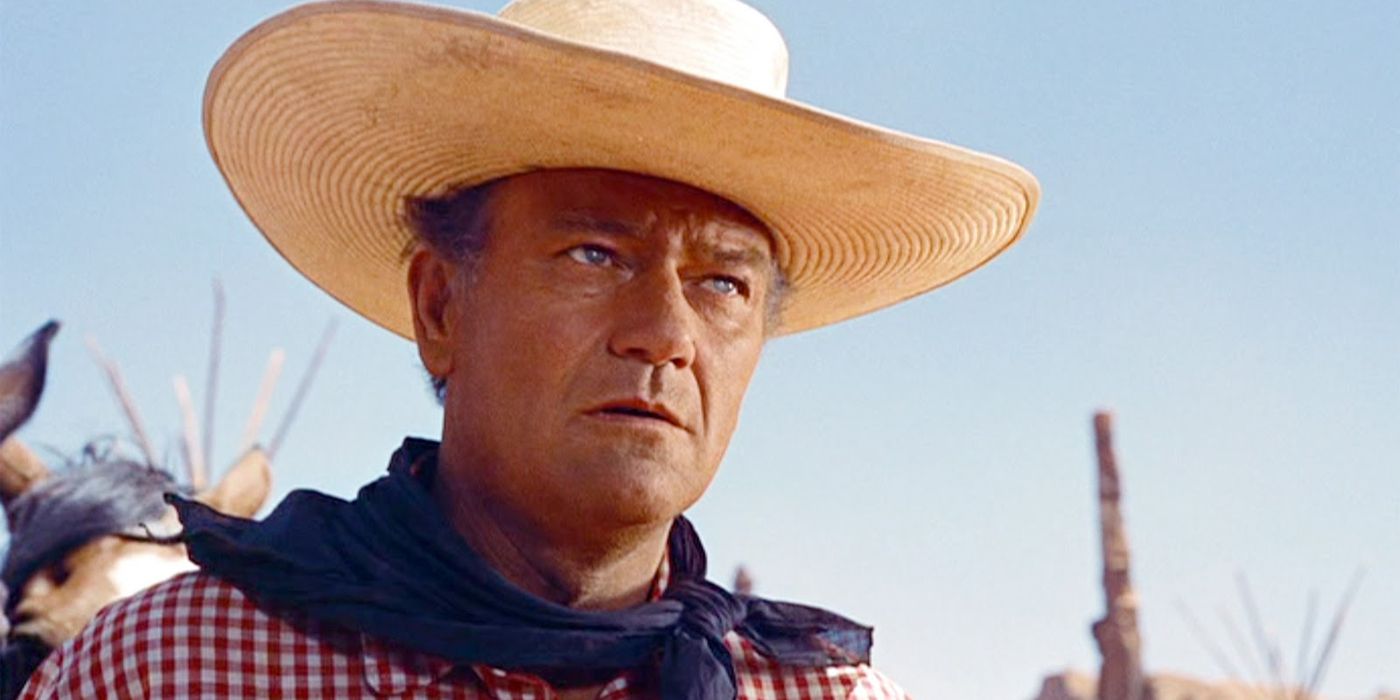His career spanned more than five decades, and his influence on movie-making remains unparalleled. Still, even the biggest movie lovers may not know his name, John Ford. Often associated with Westerns, Ford made movies across genres, pushing the envelope at every turn. His efforts garnered him four Academy Awards for Best Director, a record that remains in place more than 50 years after his death.
Ford started making movies during the era of silent films but moved to Westerns during the 1930s. Notoriously harsh with his actors, Ford collaborated with greats like John Wayne, Henry Ford, and Maureen O’Hara on several occasions. He made several movies with Wayne, including Stagecoach and The Searchers, often regarded as two of the most influential films in cinematic history.
John Ford’s Career Started His Career In Hollywood As An Actor
John Ford wasn’t the only member of his family who moved to Hollywood from their family home in Maine. Francis Ford, 12 years older than John, acted in several silent films before becoming a director. He gave John a role in The Mysterious Rose in 1914, and in the following years, John took on various duties behind the camera.
As John gained experience on movie sets, he interacted with extras like John Wayne, Henry Fonda, and Maureen O’Hara, actors who would become integral to his movie-making. John branched out on his own and started directing during the mid-1910s. By the late 1920s, he had made dozens of silent movies, although relatively few survived in their entirety.
As the age of talkies began, John was at the heart of groundbreaking scenes like the ones in Mother Machree (1928), which featured the first song sung on screen in a Fox Film production. By the late 1920s, Ford had made dozens of Westerns but began to look outside the genre. Ford’s 1935 film The Informer about the Irish War of Independence won him his first Best Director Oscar. In 1939, Ford returned to the Westerns with Stagecoach.

Related
Every John Wayne Movie Directed by John Ford
John Wayne made many famous movies, but his 14-film collaboration with John Ford contains some of his best work.
John Ford Dominated The Academy Awards During The Early 1940s
Throughout the 1930s, director Frank Capra won three Academy Awards for director for It Happened One Night (1934), Mr. Deeds Goes to Town (1936), and You Can’t Take It With You (1938), establishing the record John Ford would later break.
Stagecoach, later credited with revitalizing Westerns in Hollywood, united John Ford and John Wayne. Ford was nominated for a Best Director Academy Award for Stagecoach but didn’t win. Wayne, for his part, was launched into stardom by Stagecoach. Even Wayne was taken aback by the reception it received when he viewed it alongside an audience:
“I had never in my life seen anything as exciting… The way those kids took to the picture was tremendous. They laughed, clapped, stomped, and obviously loved it. “
In 1940 and 1941, Ford again brought successful and pioneering movies to theaters. Ford teamed up with Henry Fonda for The Grapes of Wrath in 1940 to tell John Steinbeck’s story of the Dust Bowl on the big screen. Ford won the Academy Award for directing The Grapes of Wrath, while Fonda earned a nomination for Best Actor for the movie.
The following year, Ford was back making Westerns and winning Oscars, earning his third Best Direction award for How Green Was My Valley. The movie, starring Maureen O’Hara, Roddy McDowall, and Walter Pidgeon, won five Oscars, including Best Picture.

Related
These Are The Best John Ford Films, Ranked
Director John Ford’s style changed movies forever, and the naval officer produced some of Hollywood’s greatest early works.
John Ford’s Career Experienced Numerous Ups And Downs Until It Ended
During World War Two, John Ford continued making movies, albeit as head of the United States Navy’s photographic section of the Office of Strategic Services. He was at the Battle of Midway in 1942, filming what would become the Academy Award-winning documentary, The Battle of Midway. He received a shrapnel wound as well, an injury that would plague him for the rest of his life. His documentary, December 7 (1943), also won an Academy Award.
Ford later said of his experiences:
” They were the calmest people I have ever seen… I figured then, ‘Well, if these kids are American kids, I mean this war is practically won.’”
When Ford returned to making feature films, he again worked with staple actors, like Henry Fonda in My Darling Clementine (1946), John Wayne in She Wore a Yellow Ribbon (1949), and Rio Grande (1950). His 1952 movie, The Quiet Man, with Wayne and Maureen O’Hara about an American boxer who falls for an Irish woman—another departure for Ford—led to his fourth and final Academy Award for Best Director.
The path of Ford’s career paved the way for future filmmakers, but it also burned several bridges along the way. On the set of Mister Roberts in 1955, the tension between Ford and star Henry Fonda came to blows, an interaction that exacerbated Ford’s already heavy drinking. He and Fonda never worked together again.
Ford wasn’t done making movies, and one year later, The Searchers with John Wayne hit theaters. In 2013, Martin Scorsese reviewed The Searchers, explaining that it was a movie he watched often. He continued,
“For me and for many other directors of my generation, it was a touchstone.”
Ford’s career lasted until he made his final movie in 1966.
